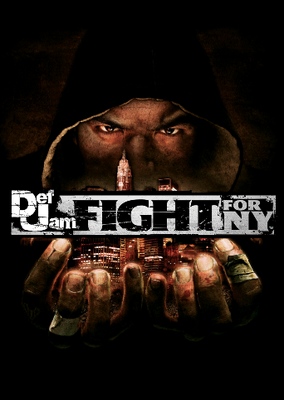

I have to transform my mindset from running down a health bar to putting someone down. The next moment, we’re taking turns brutalizing each other with contextual attacks against the jukebox, in search of an instant knockout.įights can only end definitively.

One moment, my opponent and I plod toward each other, trading heavy shots to the temple and gut. The game is violent and lurid, with a pace that also veers between extremes. The noise of the braying audience and the lights - always too bright - can be overwhelming. It feels like negotiating a river of the damned. I can use the crowd in Def Jam: Fight for NY, but they’re also among the most dangerous elements within Def Jam’s combat model. They just want to see human bodies torn apart. They don’t seem to care about any of the personalities or recognizable stars involved.

They grab at anyone who strays too close to the edge of an arena, holding them tight for a cheap shot from the opposing fighter, or outright beating them with the weapon in their own hands. They bring broken beer bottles and cable cutters pool cues and spiked two-by-fours. And it’s important to remember that the fans hate both of us. Fans of the fight, not the fightersĮach arena is filled not just with environmental hazards I can use to menace my opponent, but fans. It’s a treadmill of escalating rewards and cost that leaves my character looking like a million dollars despite having less than 10 in their bank account. The more expensive the clothes, the faster you power up. Outfits also change over the course of the campaign, because every piece of bling you buy - purchased from real-life jeweler Jacob Arabo - makes you more powerful. Players create their own character, choosing their fighting style from a set of five: submissions, street fighting, martial arts, wrestling, and kickboxing. Two famous people enter a ring, and one of them leaves after being horribly mangled in very entertaining ways. Real-life rappers, musicians, and celebrities take on new roles within an underground universe of brutal fights, usually playing a stylized version of themselves.

Vendetta transplants the culture of hip-hop into a gonzo alternate reality where beatdowns, not the beats themselves, decide success. Its first collaboration with Electronic Arts and Def Jam, 2003’s Def Jam Vendetta, was an unexpected commercial hit. Before it started the wildly successful Style Savvy series, Syn Sophia, as AKI, was known for making damn good wrestling games. Too real for wrestlingĭef Jam: Fight for NY was developed by AKI Corp., now known as Syn Sophia. You see, Def Jam: Fight for NY is a game about fantasies - hyper-specific fantasies that, taken to their limit, make for one of the most memorable licensed games of all time. Henry Rollins is my very best friend, and if he reads this article, I will disavow any knowledge of writing it. Then, he tells me to get my ass to the gym - because there’s always room for improvement. Near the end of the game, Henry Rollins uses these moves against me, creating an eternal saga of friendship in which Henry Rollins has trained me to defeat Henry Rollins, so he can congratulate me for defeating Henry Rollins. Rollins knows at least five major forms of combat, and demonstrates every single one in hazy prerendered videos where he uses over-the-top moves to break every bone in his opponent’s body.


 0 kommentar(er)
0 kommentar(er)
